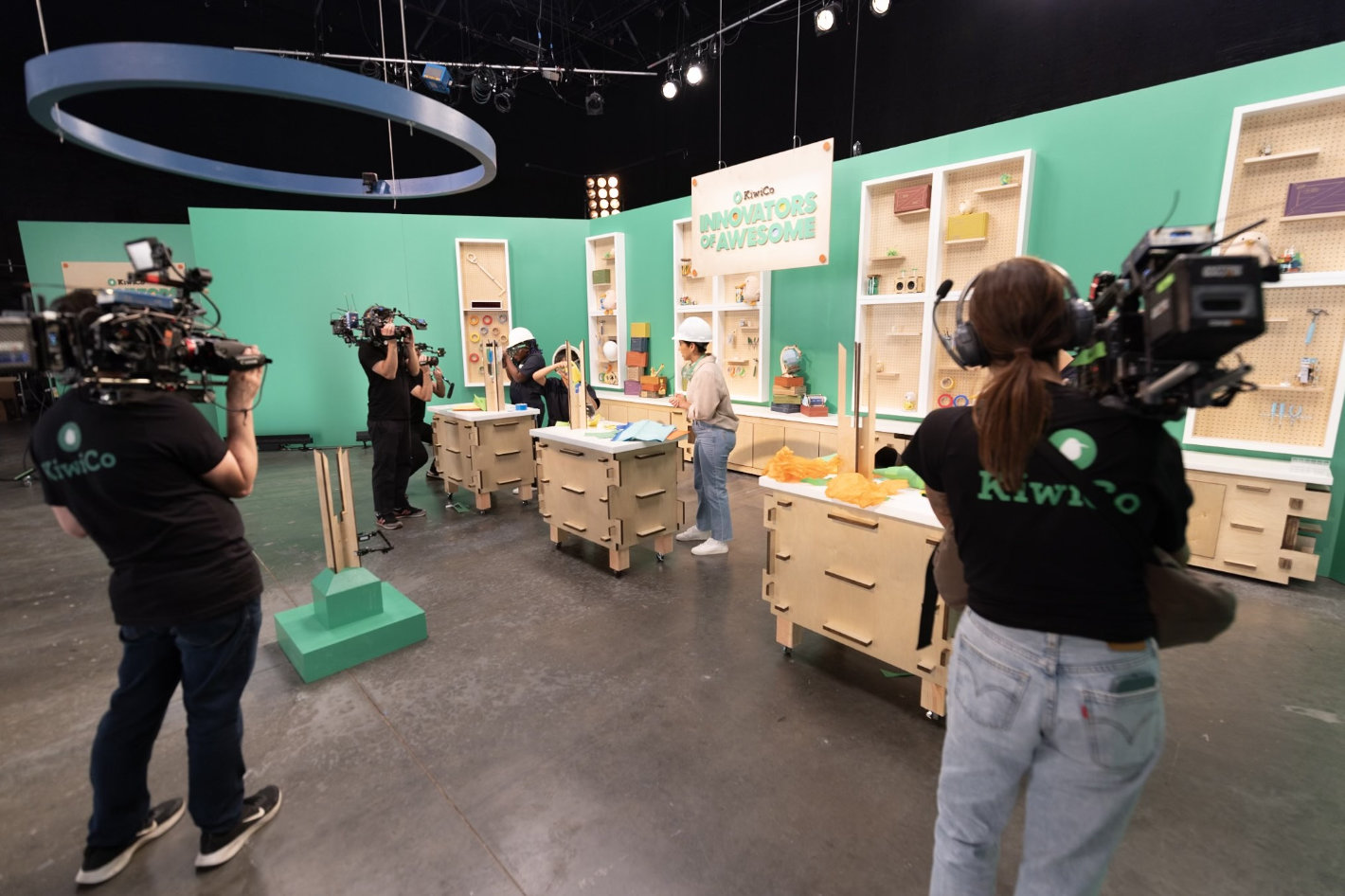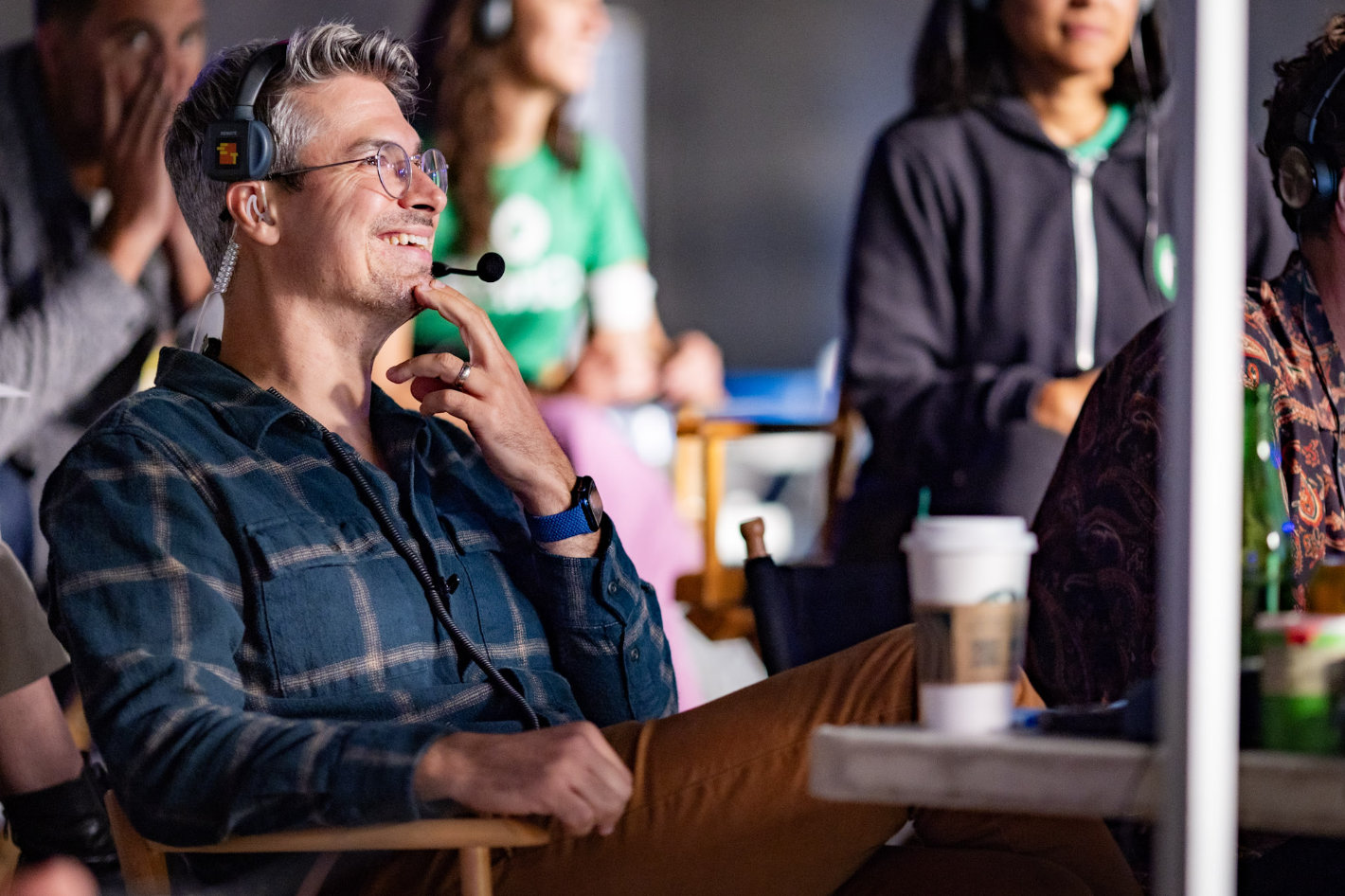
The first season of Innovators of Awesome, a youth-aimed science competition show from toy company KiwiCo follows three 11- and 12-year-old kids as they collaborate and compete against each other to complete puzzles requiring creative thinking and problem-solving skills. It is fun, educational, inspiring, and at the end of the season, there’s a $25,000 cash prize along with the cherry-on-top opportunity to design a new KiwiCo Crate which will be shipped to kids like the contestants, across the country.
Director/Local 600 Cinematographer Graham Sheldon was up for the challenge when he took on the series Innovators of Awesome. Given four days to shoot the season, Emmy- and Telly-award winner Sheldon and his team were also put to the test.
“With a live competition show – he explains – “my goal as Director and DP was to limit the moments cameras need to reset because you want to maintain momentum without interrupting the build and experimentation for the contestants. Our pre-planning went into keeping the pace up and then maintaining quality coverage despite the fact that the cast had free reign to move in the large studio space.”

Ten episodes in four days
Tasked with the production of ten episodes in four days, it became clear that it was crucial to stay on top of every move. Gear was critical. Sheldon devised an elaborate equipment list of various bodies—from GoPros to 4K cinema cameras. With so much to capture on set and half a dozen images to keep track of at any one time, monitoring was crucial. SmallHD screens were the choice to help keep the creative vision comprehensible and cohesive throughout.
Here is a description of the whole production workflow, shared by SmallHD:
Along with 1st AC Tessa Kier, Sheldon made sure the camera package was sufficient to cover their bases. That meant 17 camera bodies, with seven forming the core of a Canon multi-cam setup, including three EOS C300 Mark IIIs, two EOS C500 Mark IIs, a PTZ, and an EOS R5C. The C300 and C500 bodies were each equipped with a Canon 18-80mm or 70-200mm CNE zoom that lived on its camera. Ten more cameras were used for specialty shots: a DJI Ronin 4D gimbal cam, two Freefly Embers for slow motion, six GoPros, and a Canon EOS C70, rigged for each individual experiment.
Five operators ran the main Canon cameras, bouncing between shoulder mounts and tripods on rolling spreaders. The DJI Ronin was used to set the tone.
“In the opening shot, the kids run out from behind the backdrops to make their introductions,” notes Kier, “while Graham used the DJI 4D gimbal, running backwards to get a nice smooth shot of them.” GoPros were reserved for specialty shots, such as during the bottle rocket experiment, where cameras were affixed overhead as well as on the rockets for takeoff. “Graham got some really cool shots with the Ember, which shoots up to 800 frames per second,” she adds. “In one particular episode, we got great reaction shots as they dumped orange goo all over the kids’ parents.”
With such a hefty amount of footage captured simultaneously across diverse camera formats, consistent image accuracy was key. Sheldon chose an array of SmallHD monitors, including two Cine 18s, a Cine 24, two Cine 13s, and a 1303 HDR. He says, “A video village fully populated with SmallHD monitors is always my goal on any show for both camera matching reasons and for the spiffy UI. I was constantly bouncing between False Color and toggling waveform on and off as I verified exposure for the operators running around following the action. I was also calling camera coverage based on a complicated set of diagrams and shot lists. My gaffer, Arthur Garcia, sat close to me at village so we could discuss specific lighting cues that may have needed to be executed, depending on the situation.
“There was also our DIT, Wilson Chung, who balanced a huge amount of incoming 4K media with ease coming from the different types of camera systems. He was able to provide both confidence that we are getting what we needed, and also spot-checking specific camera placements—like directly underneath a rocket!”
Along with them, key crew and the KiwiCo Creative Director were stationed at video village watching five SmallHD monitors. 1st AC Kier notes that, “the Cine 18s and Cine 13s each had a single image.” A fan of SmallHD’s Quad View OS preset from previous shows, Sheldon took advantage of the Cine 24 in multi-view mode with four camera feeds. With much to review, having clear and cohesive viewing technology made all the difference.


